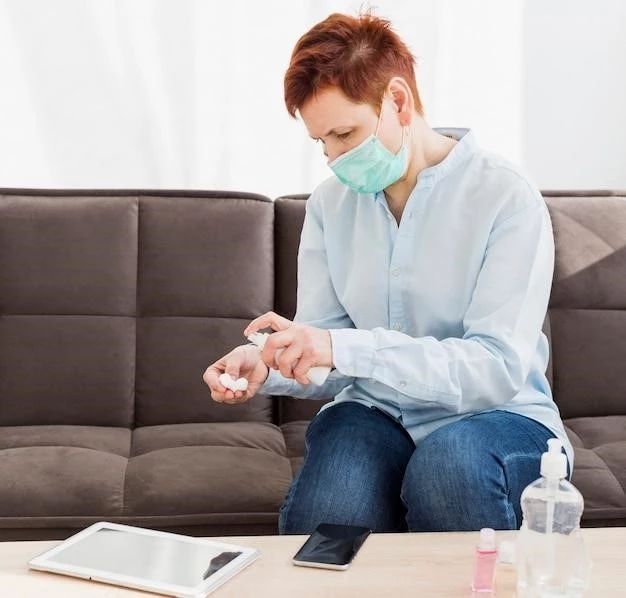Article Plan⁚ Disease ⏤ Mucormycosis

Overview of Mucormycosis
Mucormycosis, also known as black fungus, is a rare but serious fungal infection caused by a group of molds known as mucormycetes. This angio-invasive infection primarily affects individuals with weakened immune systems or underlying health conditions. It can manifest in various parts of the body such as the sinuses, lungs, brain, and skin after exposure to fungal spores. The infection can lead to severe symptoms, and early diagnosis is critical for successful treatment.
The incidence of mucormycosis has been on the rise globally, with notable increases in countries like India. The recent surge in cases has been associated with factors such as immunosuppression, underlying diseases like diabetes and malignancy, as well as certain treatments like chemotherapy and corticosteroids.
Recognizing the clinical signs and symptoms of mucormycosis is essential for timely intervention. Diagnosis often requires tissue samples and culture to identify the causative fungi, which commonly include Rhizopus, Rhizomucor, and Mucor. Treatment typically involves a combination of antifungal medications, such as amphotericin B, and surgical intervention.
Understanding the risk factors, symptoms, diagnosis, and management of mucormycosis is crucial in mitigating the impact of this potentially life-threatening fungal infection.
Causes and Risk Factors
Mucormycosis, a fungal infection caused by mucormycetes molds, affects individuals with weakened immune systems or underlying health conditions. Common risk factors include uncontrolled diabetes, malignancy, organ transplantation, and treatments like corticosteroids. Exposure to fungal spores in the environment is a key cause. Certain medications that suppress the immune system may also increase susceptibility to mucormycosis.
Factors contributing to the recent surge in mucormycosis cases include widespread use of immunosuppressive therapies, such as corticosteroids, in COVID-19 patients. Individuals with severe COVID-19 are more vulnerable to fungal infections due to their weakened immune response.
Patients with diabetes, especially those with diabetic ketoacidosis, are at heightened risk. Cancer patients undergoing chemotherapy, individuals with organ transplants, and those with neutropenia are also predisposed to mucormycosis. Understanding these risk factors is crucial for early identification and management of the infection.
Environmental factors play a role, as mucormycetes are commonly found in soil, decaying organic matter, and indoor environments. Inhalation of fungal spores can lead to infection, particularly in individuals with compromised immune function.
Recognizing the complex interaction between immune status, underlying health conditions, medications, and environmental exposure is essential in comprehensively addressing the causes and risk factors associated with mucormycosis.
Symptoms and Diagnosis
Mucormycosis can present with a variety of symptoms depending on the site of infection. Common symptoms include fever, headache, facial pain or numbness, nasal congestion or discharge, black lesions on the skin, shortness of breath, and chest pain. In cases where the infection spreads to the brain, individuals may experience altered mental status, confusion, and even coma.
Diagnosing mucormycosis requires a combination of clinical evaluation, imaging studies such as CT scans or MRIs, and laboratory tests. Tissue biopsies are often necessary to identify the specific fungi causing the infection. Cultures may be performed to isolate the fungi, with common culprits being species like Rhizopus, Rhizomucor, and Mucor.
Early diagnosis is critical in mucormycosis due to its rapid progression and high mortality rates. Healthcare providers must maintain a high index of suspicion, especially in individuals with known risk factors. Prompt initiation of antifungal therapy, typically with amphotericin B, and potential surgical intervention are crucial in managing this invasive fungal infection.
Understanding the symptoms and diagnostic process for mucormycosis is essential for healthcare professionals to expedite appropriate treatment and improve patient outcomes.
Treatment and Management
Treatment of mucormycosis typically involves a multidisciplinary approach combining antifungal medications, surgical intervention, and management of underlying conditions. The primary antifungal therapy for mucormycosis is amphotericin B, administered intravenously. This medication targets the fungal infection and is often continued to ensure complete eradication of the fungus.
Surgical debridement is a vital aspect of managing mucormycosis, especially in cases where the infection has led to tissue necrosis or is localized in specific areas. Removal of infected tissue can help reduce the fungal burden and improve the effectiveness of antifungal treatment.
Management of underlying conditions is crucial in preventing recurrence of mucormycosis. For individuals with conditions like diabetes or immunosuppression, optimizing disease control and minimizing risk factors can help reduce susceptibility to fungal infections.
Combination therapy with other antifungal agents like posaconazole or isavuconazole may be considered in certain cases, especially as a step-down therapy following initial treatment with amphotericin B.
Regular monitoring and follow-up are essential to track the progress of treatment, assess response to therapy, and detect any signs of recurrence. Close collaboration between infectious disease specialists, surgeons, and other healthcare providers is key to ensuring comprehensive and effective management of mucormycosis.
Prevention Strategies
Preventing mucormycosis involves measures to reduce exposure to fungal spores and addressing underlying risk factors. Individuals, especially those with weakened immune systems, should avoid environments with high levels of mold, such as construction sites, areas with decaying organic matter, and dusty environments.
Maintaining good hygiene practices, including regular handwashing, can help reduce the risk of fungal infections. Individuals with diabetes or other predisposing conditions should prioritize disease management and adhere to treatment regimens to minimize susceptibility to mucormycosis.
Limiting the use of immunosuppressive therapies, particularly in individuals recovering from severe illnesses like COVID-19, can help lower the risk of opportunistic fungal infections. Healthcare facilities should implement strict infection control measures to prevent the spread of fungal spores within hospital settings.
Early detection and treatment of infections or injuries that could potentially lead to mucormycosis are essential in preventing the onset of the disease. Educating healthcare professionals and the general public about the risk factors and symptoms of mucormycosis can promote timely intervention and reduce the impact of this rare but serious fungal infection.
Impact of COVID-19 on Mucormycosis Cases
The impact of COVID-19 on mucormycosis cases has been notable, with an observed rise in infections among individuals recovering from or with severe cases of the virus. The use of immunosuppressive treatments, notably steroids, in COVID-19 management has contributed to increased susceptibility to opportunistic fungal infections like mucormycosis.
Individuals with diabetes or undergoing cancer treatment, especially chemotherapy, are also at heightened risk for mucormycosis post-COVID-19. The compromised immune response following severe viral infection creates a favorable environment for fungal growth and invasion in susceptible individuals.
Healthcare providers have reported a surge in mucormycosis cases in several countries, including India, where a significant increase in cases has been documented. The association between COVID-19 and mucormycosis highlights the need for vigilance in monitoring and managing fungal infections in recovering COVID-19 patients.
Understanding the impact of COVID-19 on mucormycosis cases underscores the importance of tailored preventive strategies and early recognition of symptoms to mitigate the incidence and severity of this serious fungal infection in vulnerable populations.

